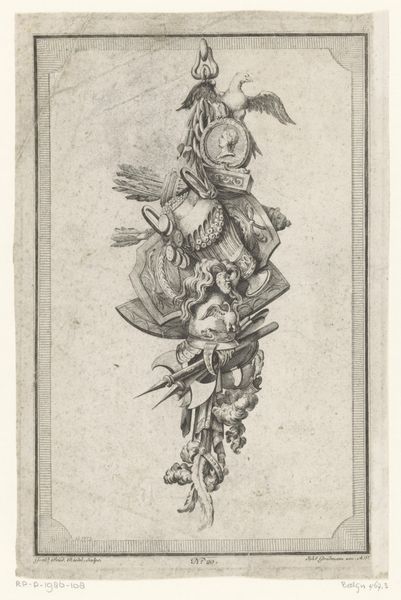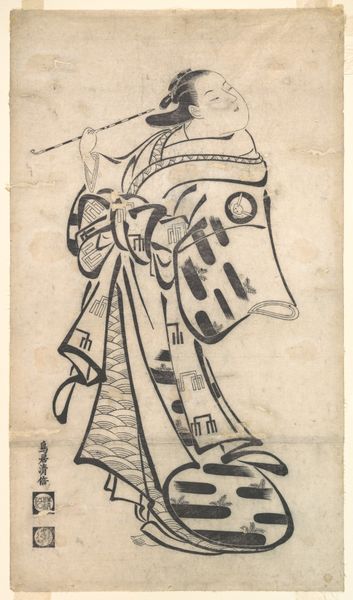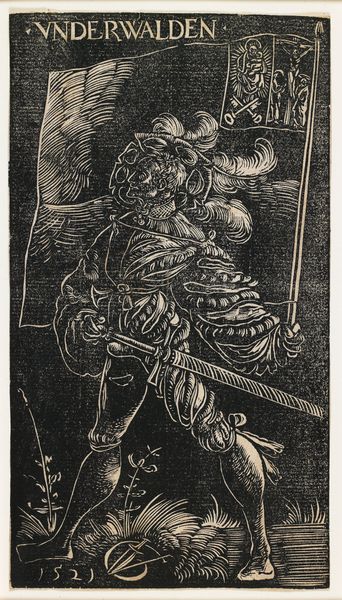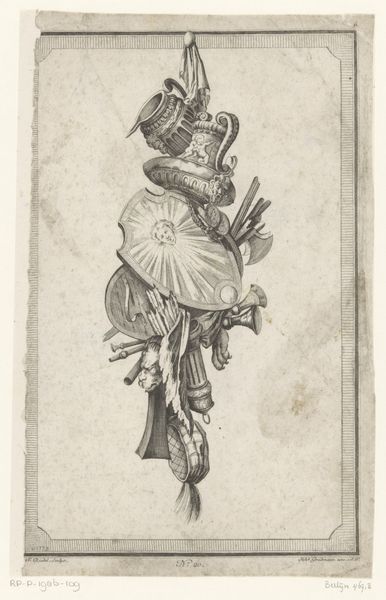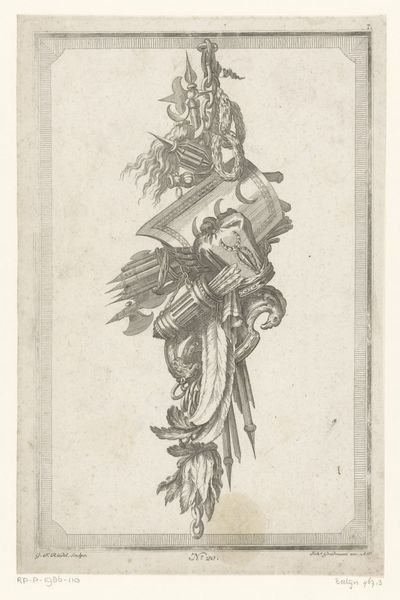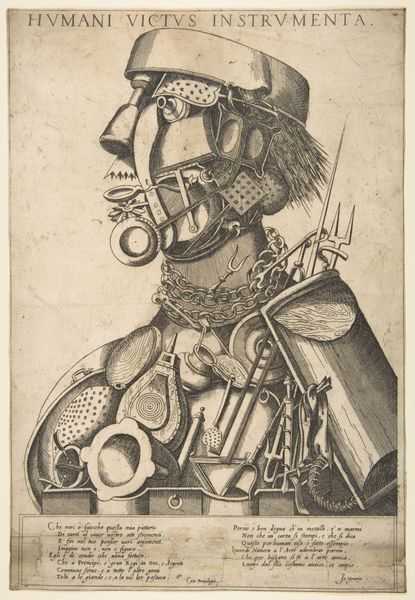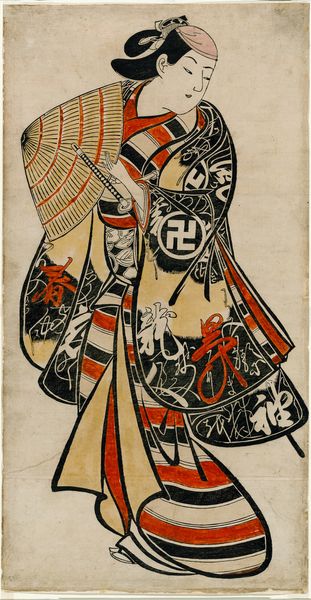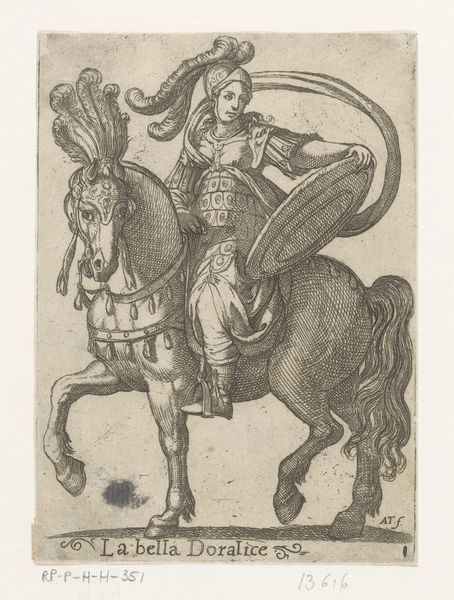
Mercury Putting Argus to Sleep and Festoon of Instruments 1525 - 1600
0:00
0:00
Dimensions: sheet: 9 15/16 x 2 5/8 in. (25.3 x 6.7 cm)
Copyright: Public Domain
Curator: Look at this intriguing piece. It's an engraving titled "Mercury Putting Argus to Sleep and Festoon of Instruments," dating roughly between 1525 and 1600, attributed to René Boyvin. Editor: My immediate reaction? It's incredibly detailed, almost overwhelming! A very odd but fascinating combination of classical figures and, well, an avalanche of… stuff. Curator: Indeed! The top section illustrates the myth of Mercury lulling Argus, the many-eyed giant, to sleep, while the bottom is a "festoon" of precisely rendered tools and instruments. Given that this is a print, likely an engraving, it speaks to a very specific kind of artistic production aimed at dissemination. Editor: The juxtaposition is what really grabs me. The serene classical scene, symbolizing, what, divine intervention, knowledge perhaps, positioned right above a visually busy assortment of everyday objects. This raises interesting questions about the status of labor and ingenuity in society at the time. Curator: Precisely! The accumulation of objects—scientific instruments, musical tools, architectural devices—tells a compelling story about the social value placed on artisanal skill and intellectual inquiry during the Renaissance. These instruments suggest a culture fascinated by knowledge creation and technical prowess. Think about how images of scientific instruments or mathematical equipment elevated not only their purpose but their makers. Editor: Right. And let's not forget the context of image making. Engravings like these served a crucial role in circulating knowledge. How accessible were these images to the common person? Curator: It's a vital question. These prints acted as vital tools for communication. Consider, for example, the development of linear perspective—which aided to make 2-dimensional drawings lifelike—it revolutionized architecture and how it's conceptualized, but it also aided stage set production and other visual art forms. These engravings gave rise to an increase of skillsets, helping in spreading knowledge to others of different skillsets. Editor: Ultimately, it speaks volumes about the changing relationship between art, craft, and the broader social and intellectual landscape. It wasn't just decorative; it was functional. Curator: A powerful reminder that objects carry stories of their making, their use, and the hands that shaped them. Editor: Absolutely, a glimpse into a world of skill, innovation, and the social systems propping them up.
Comments
No comments
Be the first to comment and join the conversation on the ultimate creative platform.


